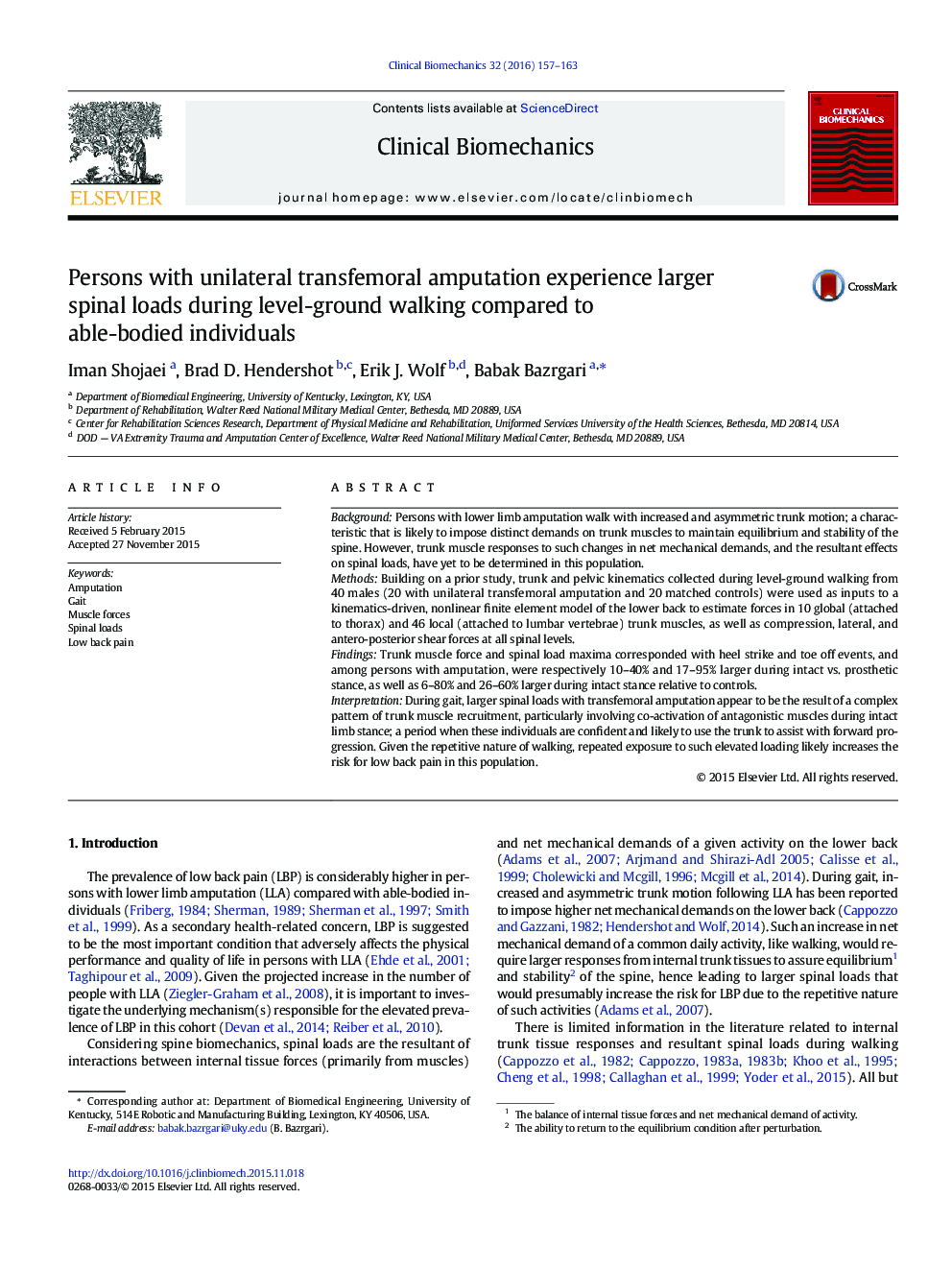| Article ID | Journal | Published Year | Pages | File Type |
|---|---|---|---|---|
| 6204627 | Clinical Biomechanics | 2016 | 7 Pages |
â¢Persons with lower limb amputation have been reported to walk with large and asymmetric trunk motion.â¢The recruited patterns of muscle forces to generate such changes in trunk motion following amputation were estimated.â¢Level over ground walking was found to be associated with ~ 45% larger spinal loads in person with versus without amputation.â¢Repeated exposure to larger spinal loads during walking may elevate low back pain risk.
BackgroundPersons with lower limb amputation walk with increased and asymmetric trunk motion; a characteristic that is likely to impose distinct demands on trunk muscles to maintain equilibrium and stability of the spine. However, trunk muscle responses to such changes in net mechanical demands, and the resultant effects on spinal loads, have yet to be determined in this population.MethodsBuilding on a prior study, trunk and pelvic kinematics collected during level-ground walking from 40 males (20 with unilateral transfemoral amputation and 20 matched controls) were used as inputs to a kinematics-driven, nonlinear finite element model of the lower back to estimate forces in 10 global (attached to thorax) and 46 local (attached to lumbar vertebrae) trunk muscles, as well as compression, lateral, and antero-posterior shear forces at all spinal levels.FindingsTrunk muscle force and spinal load maxima corresponded with heel strike and toe off events, and among persons with amputation, were respectively 10-40% and 17-95% larger during intact vs. prosthetic stance, as well as 6-80% and 26-60% larger during intact stance relative to controls.InterpretationDuring gait, larger spinal loads with transfemoral amputation appear to be the result of a complex pattern of trunk muscle recruitment, particularly involving co-activation of antagonistic muscles during intact limb stance; a period when these individuals are confident and likely to use the trunk to assist with forward progression. Given the repetitive nature of walking, repeated exposure to such elevated loading likely increases the risk for low back pain in this population.
